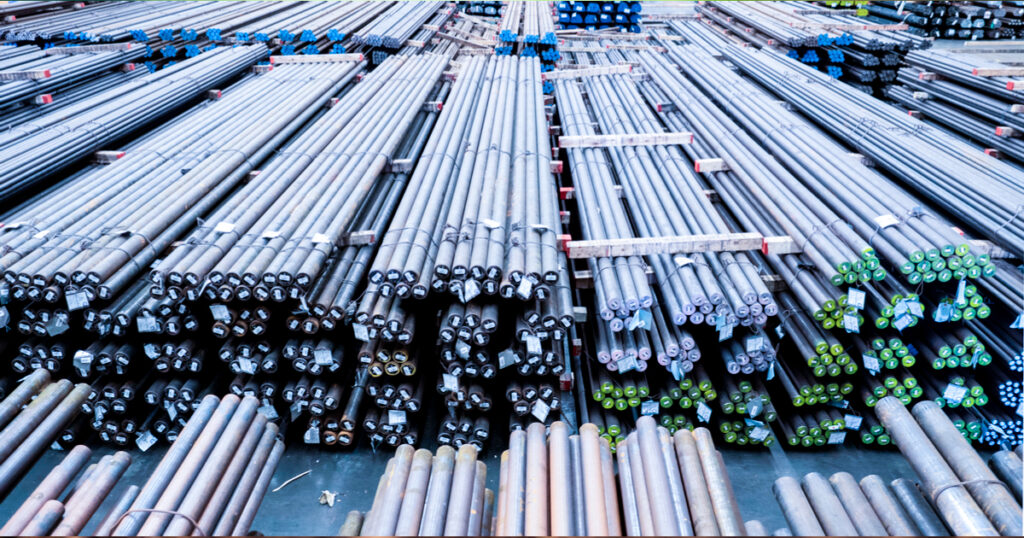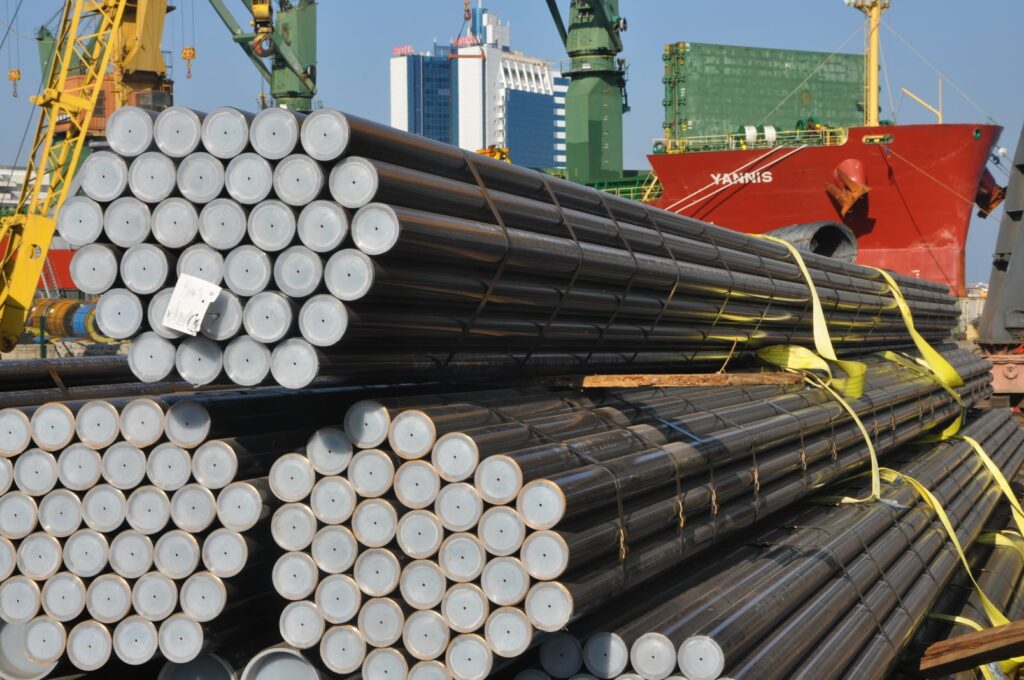Export of metals through ports: is there a chance?

In order to pass the difficult for the economy year 2023, Ukraine needs to unblock ports for the export of metallurgical products.
As a result of russia’s war of aggression against Ukraine, a record deficit was included in the draft budget for 2023. The state needs additional currency revenues. And the export of metal can provide tens of billions of hryvnias.
Income from iron ore rent in 2023 should amount to UAH 7.7 billion, which is almost equal to the amount paid by enterprises in 2021. At that time, Ukraine exported 14.6 million tons of metal products, writes RBC. Most of them were cast iron (3.2 million tons), castings (3 million tons) and slabs (2.8 million tons).
However, the metallurgical industry is currently in an extremely difficult state. Several factories are operating at minimum capacity, and the activity of mining and beneficiation plants has completely stopped. According to Ukrmetallurgprom, this year steel production decreased by three times. In June, the largest metallurgical plant in Ukraine, ArcelorMittal Kryvyi Rih, was loaded by less than 10%, Interpipe Steel by two-thirds, and Zaporizhstal by 30%. Only as a result of the occupation of Mariupol, Ukraine lost a third of its metallurgical capacity.

The remaining enterprises have significant problems with the delivery of raw materials and the export of finished products across land borders. Almost all metallurgical enterprises are located in areas close to the places of hostilities, commented the president of OP “Ukrmetallurgprom” Oleksandr Kalenkov.
In addition, only as of the beginning of June, the marauder-country exported more than 5,500 tons of rolled metal, primarily from the ports of Berdyansk and Mariupol. Lyudmila Denisova, the Human Rights Commissioner of the Verkhovna Rada, clarified: even before the war, there were up to 200,000 tons of metal and cast iron worth 170 million dollars on the territory of the Mariupol port.
The main export route now runs through 11 railway points on the borders with Poland, Slovakia, Hungary, Romania and Moldova. Even before the full-scale invasion, only one of them, in Izov (Volyn), worked at 100%, the rest – at 50-80%.
Before the war, the main importers of Ukrainian metal products were Turkey, Italy, the USA and China. More than 85% of ferrous metals and 70% of iron ore went abroad through the ports of Mariupol, Odesa and Mykolaiv. Thus, only the “Southern” port processed 29.14 million tons of iron and manganese ore – and this is 77% of the total cargo flow of ore in Ukraine.

The port of Mariupol was no less important for the industry – the leading metallurgical plants and companies of Ukraine are located next to it. First of all, “Azovstal” and “MMK of Ilyich”.
The export of metal products was also carried out by the Kherson and Zaporizhzhya river ports, which are currently blocked due to russian aggression. Small consignments of metal also went through the Danube, through the ports of Izmail and Reni.
As for sea ports, they exported 15.3 million tons of metal last year, and 15.04 million tons the year before. In general, the results of the processing of metal products in seaports important for the industry were as follows:
Mariupol port — 5 million tons;
Odesa port — 4.9 million tons;
Mykolaiv port — 3.2 million tons.
Currently, only the ports of the Odesa region are able to connect to the shipment of metals. The main facilities for the export of metallurgical products are located in the “Southern”, Odesa and Black Sea ports. Half of the world has already joined the negotiations on the continuation of the Istanbul Agreements. We will remind you that they only talk about grain and fertilizers; no other loads are currently being discussed. Therefore, metal exporters should not count on the restoration of sea routes now.

In such conditions, the prospects of the “metal corridor” are opening up for Ukrainian ports on the Danube — in particular, Izmail and Reni. Before the war, no more than 5 million tons of cargo were shipped through Izmail port every year, although the port’s installed capacity reaches 7 million tons. Reni port used its potential by only 10%, handling 1.4 million tons of cargo.
However, during the war, the Danube ports accounted for 30% of Ukrainian exports, the Ministry of Infrastructure notes. From there, the goods are sent to Romania to the port of Constanta, and then they are transported by sea to other countries.
“The war created opportunities for the growth of three ports at the mouth of the Danube – Izmail, Reni and Ust-Dunaisk. For a certain period, these were the only three ports out of 13 that were able to work fully. In peacetime, they accounted for slightly less than 5% of exports. We have ensured the stable operation of logistics routes for the shipment of grain cargoes through the Danube ports. I would like to note that cargo handling through the Danube ports – Reni, Izmail, Kilia – increased more than 2.6 times. Including, exports increased by 3.2 times. In 8 months, the Danube ports handled 3.4 million tons of grain,” said the head of Odesa Regional Military AdministrationMaksym Marchenko.
The Ministry of Infrastructure now hopes to double the capacity of ports on the Danube through the construction of new terminals, including multimodal ones. Dredging and further implementation of the Danube-Black Sea deep-sea navigation project are also planned. They are considering the possibility of insuring foreign wagons and ships so that they can enter the territory of Ukraine without risks. For this, it is necessary to attract private investments – in the amount of 200 million dollars, says the Minister of Infrastructure of Ukraine Oleksandr Kubrakov.

Despite the low load and capacity of the Danube ports, the advantageous geographical position can become a key factor in favor of their use.
It is too early to judge whether such a strategy will work. Even after the liberation of all the occupied territories, it will take years to restore the looted, and in some places completely destroyed industry.
Today, the sea export of agricultural products largely helps to keep Ukraine’s economy “afloat”. However, the expansion of the Istanbul agreements on the export of metal will provide the state with significant revenues to the budget, supporting not only the economy, but also the provision of the Ukrainian army and the expulsion of the enemy from the borders of our state.
Danylo Popov





